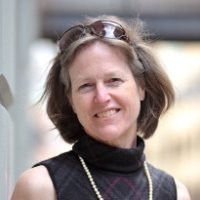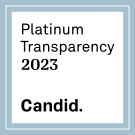HDC Member Highlight: Valerie Thiel – SAGE Architectural Alliance
Valerie Thiel is an architect, advocate, innovator, and leader in the affordable housing sector. She is the founding principal of SAGE Architectural Alliance, which specializes in design for seniors, veterans, under-served populations, multifamily residences, and affordable housing for all populations. SAGE’s mission is to shape spaces for social connection and wellness.
Valerie’s dual background in architecture and structural engineering, has been her secret weapon during her 30+ years of architectural experience, 20 of which has been focused on senior and special needs housing. In an industry that is otherwise disproportionately controlled by men, Valerie’s leadership in cutting-edge innovations for senior lifestyles and passionate advocacy for affordable senior housing reflects her unwavering commitment to social and technological change. Her inclusive leadership and advocacy efforts reflect her desire to pave the way for cultural change for future generations.
Valerie remembers thinking about her life path at age eight and realizing that the careers expected for women would not make a significant impact on the world. At least not directly. She saw the roles for women at the time to be limited and supportive, compared to men’s careers and roles to truly impact the world around them, especially as leaders. Valerie remembers being very outspoken about the limited opportunities available to women. She recalls, “I think that was the beginning of wanting the world to change.”
Growing up in Bellingham, Washington, she fell in love with architecture at age 16 when visiting Western Washington University’s campus. She noticed the ways the building structure inconspicuously drew the community together. She was eager to become an architect as she entered her undergraduate career at the University of Washington. As the only woman in her Civil Engineering program, she felt she had to prove herself and proceeded to graduate at the top of her class in only three years. She continued on to Massachusetts Institute of Technology (MIT) for her Masters in Architecture and a separate Masters in Structural Engineering.
After graduating MIT, one of her first jobs was at the Museum of Flight hanging a B-17 plane from the ceiling truss. In doing so, she detailed all the exterior glass and steel joints. At that point, she says it was nearly impossible for a woman to have a voice within a design firm. She saw a need for women to prove they were technically competent and were able leaders that could fill the need for more compassionate leadership. She expressed her frustration with the work dynamics and general sexism of the all-male firms. This lack of voice fueled her passion for grassroots organizing and community engagement within her practices.
In 1985, she became an activist with the Seattle Allied Arts and fought a freeway branch that was proposed to run east-west over South Lake Union. At the time, South Lake Union was mostly occupied by car dealerships, but the proposed overpass’ proximity to the water would have had detrimental effects on marine life and water pollution. Having her own idea for the Westlake Commons area, Valerie created a rendering of the area, which envisioned the central park surrounded by mixed-use extending from South Lake Union to Denny Way. Folks rallied behind Valerie’s innovative vision and she proceeded to meet with countless elected officials and government agencies to put this idea into fruition. In the subsequent years, Valerie moved abroad and her original idea transformed even more, but was unable to get the funding approval from voters.
After traveling around the world and working in New York, Valerie settled in Guam, which furthered her passion of helping marginalized communities through architecture. Her main 7-year effort was to help the only hospital in Guam reach accreditation standards. In doing so, she had a significant impact on improving the quality of healthcare and healthcare delivery. While raising her twin sons as a single parent, she also became the architect for a long-term care facility. In doing so, she found an unmet need in the quality of care for the elderly. Her experience in Guam completely reworked her vision for helping others. Not only was Guam a predominately matriarchal society, but it was a collaborative work environment where residents, staff, developers, etc. all had a seat at the table. End of life care became a primary focus for her work moving forward.
Returning to Seattle, Valerie found her voice as a leading expert in senior housing, and the very active non-profit organization, Leading Age. As a frequent speaker at state and national conferences, Valerie emphasizes the importance of social connection and community while providing end of life care. She remembers her own grandparent’s nursing homes as unwelcoming and dingy. She wanted to make a change for her mother’s generation by creating social connection through a warm, welcoming, and attractive environment that is a source of pride for the senior residents.
In 2011, Valerie brought these ideas to HDC membership as the co-chair of the Senior Housing Affinity Group. At the time, Valerie was a strong advocate for providing supportive services within the independent living section of senior housing as the means to best keep residents in their homes as they aged. At the time, this idea was relatively new for the many in the affordable housing sector. Over the last ten years, understanding has shifted, and the affordable housing sector now accepts that putting seniors in touch with these services is fundamental. As this progress has been made, Valerie has turned her energies towards anti-displacement work.
With more women and girls entering the building industry, we are seeing an increasing number of developer teams headed by women. As Valerie says, “Women developers are bringing innovation to affordable housing. I hope when developers choose their architects and contractors that they will begin to use more women-owned architectural firms for the richness of perspectives and innovation that can be gained. I would love to see the affordable housing sector include more women and minority-owned firms at the leadership table. I believe doing so would produce a double bottom line of new affordable housing plus broader leadership distribution and innovation across the communities served. “
Valerie is clear that the growth in the leadership of the affordable housing industry should include gender, racial and all diversities. As HDC grows as an association, Valerie hopes to lead in welcoming and actively recruiting new voices and backgrounds to the sector. She emphasizes that this will require a culture change, since the challenge is “about growing up in a world headed by white men and transitioning to a world headed by diverse leadership where all groups have a true voice.”
Thank you for all you do, Valerie!


